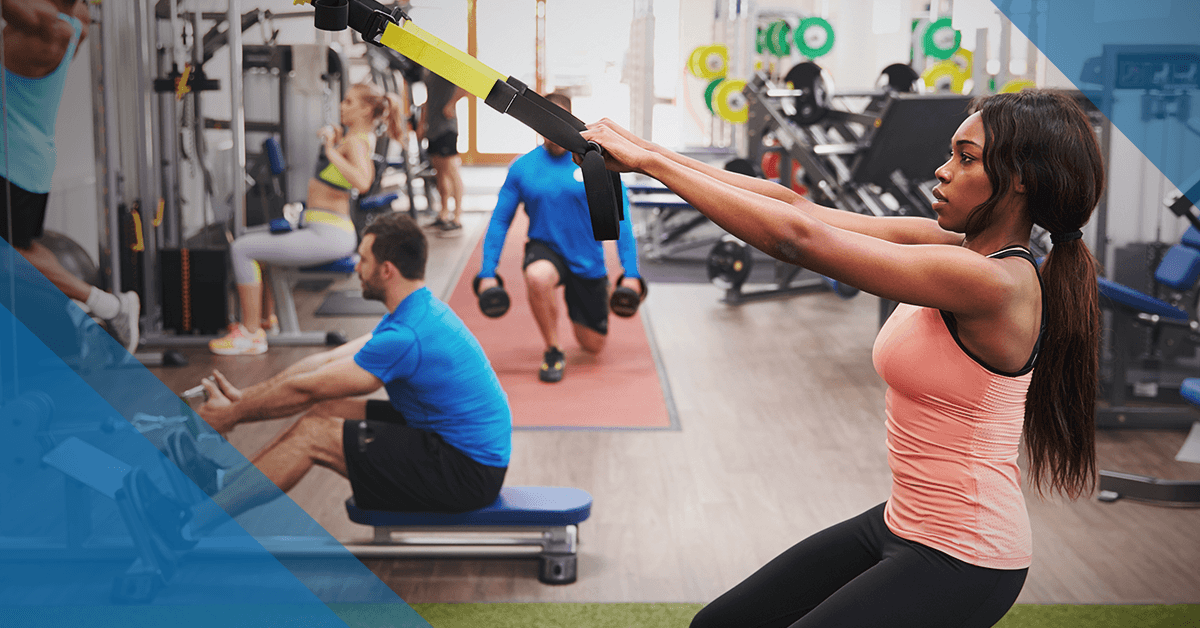Back in 2004, I bought a gym from a spiteful jerk who pulled all his equipment out, even though he knew it would be weeks before my new stuff arrived.
My three trainers and I combined the leftover gear with random stuff we had at home. This is what we came up with:
- One squat rack
- One barbell
- One Smith machine
- About 100 pounds of plates
- One adjustable bench
- One Reebok step
- Five mismatched dumbbells
- Medicine balls from five to 20 pounds
- Resistance bands
- An old gym towel
- A wide-open space
I kid you not. That’s all the four of us had for training our clients.
But against all odds, we gave those clients great workouts. Nobody asked for a refund, or left us to work with trainers whose gyms had the usual stuff.
Just as important is what scarcity did for us. It made us better trainers. It forced us to learn how to apply everything a good trainer is supposed to know about kinesiology, biomechanics, physics, and time management. It made us more flexible and creative.
I spent my time between clients experimenting with new exercises, breaking the training process down to the basics and then building it back up again.
It’s a process I recommend for every trainer. Even if you work in a fully stocked gym, there will always be times when someone’s using the dumbbells your client needs, or monopolizing the leg press machine, or otherwise preventing you from doing what you wanted to do, forcing you to think of something else on the spot.
Here’s how to make sure your client always gets a great workout, no matter how crowded the gym gets or how little equipment you can use.
1. Understand How Force Is Applied
Resistance training is simple: You’re imposing stress on a joint, and forcing the muscles that act on the joint to react appropriately—that is, to adapt to the stress by getting bigger and stronger.
No matter what the exercise is called, two things matter above all else:
- Which muscles control the movement
- Where force is applied throughout the movement
The first one’s easy. If you didn’t learn which muscles move which joints in a classroom, you surely picked it up while studying for your trainer certifications.
The second one, though, is the key to understanding the actual effect of an exercise, and how to substitute one exercise for another without tearing up your program and starting over.
Consider three exercise variations:
- Dumbbell fly
- Cable fly
- Resistance-band fly
The same muscles are used in all three, but the application of force is very different.
With dumbbells, force is aligned with gravity, so unless you live in outer space, the force is straight down. That’s why it’s hardest at the bottom and easiest at the top, where the weights move almost horizontally, and gravity takes a breather.
With cables or bands, you can literally see the line of force as you push the handles out, up, or anywhere in between. But that doesn’t mean force is applied in the exact same way. Cable machines might be engineered to manipulate resistance so it’s consistent throughout the movement, while a band will offer more variable resistance—it’s harder at the end, when the band is fully stretched, and easier at the bottom, when it contracts.
I’ve found that combination to be ideal for clients with shoulder problems, since you have the least resistance where the shoulder is most compromised. But it’s also a kick-ass option for muscle development if you can’t use dumbbells. Don’t believe me? Try it with two black bands. It’s the equivalent of 80 to 90 pounds at the top.
Every meathead knows you can adjust the line of force in a dumbbell fly by adjusting the bench up or down. But that’s nothing compared to all the ways you can manipulate angles with cables or bands. You can move the cable pulleys or the bands’ attachment points up or down, or you can move your body up or down by standing, kneeling, or lying on a bench. You can also take a step or two forward and change both the line and amount of resistance.
When it comes to exercise alternatives in a busy, crowded gym, you’re only limited by your imagination. I’ve done chest presses on an ab machine by facing the wrong direction and pushing the resistance bar. You can work your biceps at the lat-pulldown station by leaning back and curling the bar toward your forehead instead of pulling it down to your chest.
And here’s one of my favorites: By doing push-ups with a miniband around your wrists, you add a horizontal line of resistance to the vertical line supplied by your body weight working against gravity. It not only adds work for your middle and rear deltoids, it takes stress off the front of the shoulder, making it a great choice for clients with anterior shoulder pain.
2. Keep the Toolbox Full
Without knowing you, I’ll guess that you know all the basic exercises, and dozens if not hundreds of variations on them.
For each major movement pattern (push, pull, squat, hip hinge, carry) you could, off the top of your head, recite variations using body weight or external resistance; kettlebells, dumbbells, or a barbell; free weights, bands, or a machine; bilateral or unilateral; controlled or explosive.
Now ask yourself: Could you, on the spot, create a full-body workout using just one piece of equipment, or no equipment at all?
Here, for example, is a challenging program I whipped up using just one moderately heavy dumbbell and a bench:
| Exercise | Sets | Reps |
| Single-arm snatch | 3 | 8-20* |
| Single-arm chest press | 3 | 8-20* |
| Single-arm bent-over row | 3 | 8-20* |
| Goblet squat | 5 | 15-25 |
| Single-arm shoulder press | 3 | 8-20* |
| Pullover | 3 | 8-20 |
* Each side
Note the wide range of reps. Because you can’t increase or decrease the weight, you’ll hit fatigue with single-digit reps on some exercises and need two or three times as many on others.
You can do the exercises as straight sets, alternating sets, or circuits; manipulate rest periods for different training effects; and challenge your balance or core stability with simple shifts in position or posture.
Your options are unlimited, no matter how limited your equipment may be.
3. When Appropriate, Get in the Fast Lane
You know the formula: force equals mass times acceleration, or F = MA. But how often do you use it to your advantage?
Imagine someone’s curling in the squat rack. Or using the dumbbell or kettlebell you need for your client’s goblet squats. The “mass” part of the equation is suddenly out of your control. But you still have acceleration. You can often get the force you want by adding in a jump, if your client is ready for it, or increasing the speed of the exercise.
When you do, pay close attention to both parts of the movement, the positive and negative acceleration. Let’s say you have a 200-pound client doing a dumbbell squat jump. He might take off with more than 600 pounds of force. Consequently, he will land with a similar force that must be controlled through the knees, hips, and ankles.
4. Don’t Waste Time When You Can Fill It
Along with a well-stocked arsenal of muscle- and strength-building exercises, you need some go-to time fillers. These are the exercises and drills you pull out when you have unplanned downtime between sets—when you have to work in with someone else on a piece of equipment, for example. I recommend having at least 10 useful fillers in your repertoire.
Fillers can be anything from simple resistance-band movements to core exercises or mobility drills. You don’t need to go crazy with them. Your only goal is to keep your client moving. That, after all, is why she pays you. Standing around is bad for business.
5. Reject Your Biases
Trainers can be snobs. (Not you, of course; I’m talking about them.) I’ve met trainers who won’t use machines, who hate kettlebells, who say resistance bands are for sissies, who think body-weight exercises are too basic. You can probably think of a few more.
Screw those guys. Don’t worry about what they think, and don’t mimic their thought process. Yes, there are times when only one exercise will do. If you’re training a football player for the NFL Combine, for example, it would be hard to improve his score in the bench press test without doing a lot of bench presses.
But when your clients have less specific needs, you need more ways to achieve them. Starting off with a bias against an apparatus or mode of training limits your repertoire, and in a crowded gym, it’s a bias you can’t afford to have.
Like an ugly dog, you can learn to love any apparatus on its own merits.
6. Make the Gym Your Laboratory
One of the coolest things about being a trainer is that we get to do experiments every day, whether we want to or not.
I’ve been training people longer than some of my clients have been alive and I still find new ways to work muscles. They aren’t all keepers, and they certainly won’t replace the classics. But when the New Year’s Resolution crowd rolls into the gym every January, I’m never at a loss for alternative ways to give my clients great workouts.










